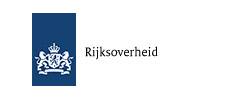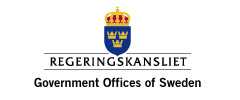France and Chernobyl
French authorities lied about Chernobyl effect, and did not take any measures to protect children, a new report proves
07.04.2005 |Sascha Gabizon
Below find a report in Dutch and English:
Daily Newspaper TROUW, Netherlands, March 27 2005
Tsjernobil-wolk bereikte Frankrijk wel degelijkVoorlopig staat het nog in ongewijzigde vorm op de website van het ministerie van industrie: "De hoeveelheid radioactiviteit ten gevolge van Tsjernobil is in Frankrijk gemiddeld bijna vijf keer lager dan die in Duitsland en Italië". Een nieuw, onafhankelijk rapport stelt nu echter vast dat de geruststellende pirouette van hoge- en lagedrukgebieden die het ministerie na het ongeluk in de Russische kerncentrale op 26 april 1986 op zijn weerkaarten toverde, "niet overeenstemmen met de exacte meteorologische omstandigheden tussen 30.
april en 5 mei 1986". Het rapport, afgedwongen door diverse maatschappelijke organisaties, beschuldigt de Franse overheid ervan de informatie over de risico's bewust verdraaid te hebben. In mistige bewoordingen stelde de Rranse regering destijds het volk gerust. "Het verschil wordt verklaard door de meteorologische omstandigheden, wind en neerslag, die van invloed zijn geweest op de verplaatsing van de radioactieve wolk na het ongeluk, en door de geografische ligging van
deze landen".
Vrij vertaald komt het hierop neer: de weergoden bliezen hun longen leeg en zorgden ervoor dat de radioactieve wolk, vrijgekomen na de ontploffing in de kerncentrale, tot stilstand werd gebracht ter hoogte van de oostgrens. Doorgaans zijn de weersomstandigheden pal over de Duitse grens dezelfde als die in Oost-Frankrijk, en verschillen die van Turijn niet veel van die in Grenoble, maar in april-mei 1986 zou er een ondoordringbaar schild hebben gehangen tussen Frankrijk en zijn buren. Ook Corsica viel onder de bescherming van de welwillende weergoden, die het
onafhankelijkheidsstreven van het eiland maar even door de vingers zagen. Het Franse ministerie van gezondheid achtte dan ook geen enkele maatregel noodzakelijk.
Advocaten staan nu in de startblokken om schadeclaims aan te kondigen. Van patiënten met schilklierkanker bijvoorbeeld, een ziekte die na 1986 tweeënhalf keer vaker voorkwam dan daarvoor. Volgens het ministerie van gezondheid komt dat evenwel door een betere manier van opsporen. Blijft de vraag waaróm de Franse
overheid de waarheid zou hebben verdoezeld. Een mogelijke verklaring is dat het land, dat zelf een enorme batterij kerncentrales heeft staan, meende dat de slapende honden niet wakker gemaakt hoefden te worden. De Franse publieke opinie is langdurig bewerkt om alle angst voor kernenergie weg te nemen, en met succes. Het zou jammer zijn als "Tsjernobil"daar een eind aan zou maken, moet men op het ministerie van gezondheid hebben gedacht. Bijna 20 jaar later lijkt het erop dat
naarmate het gif dieper in de bodem zakt, de waarheid dichter naar de
oppervlakte komt. De anti-kernenergielobby maakt zich op voor een
warme lente.
Pieter van den Blink. TROUW
French Authorities Didn't Disclose Extent of Chernobyl Radiation - Experts BBC
Monitoring International Reports, March 27, 2005Source: Radio France Internationale, Paris, in French 1600 gmt 27 Mar
05
(Presenter) Almost 20 years after the Chernobyl (nuclear) disaster, a report says the French authorities lied by omission at the time. In 1986 the authorities were aware of the degree of radioactivity of the Chernobyl cloud but didn't say everything on this issue. These are the first conclusions of an experts' report ordered by the judge in charge of the investigation in France. These pieces of information, which were revealed yesterday, do not surprise Roland Desbordes, the president of the Criirad, the Commission for Research and Independent Information on Radioactivity. The Criirad brought a civil action in 2001. It accuses the authorities of not having reacted sufficiently:
(Desbordes) Minimum measures, which were taken in all neighbouring countries, were not taken. On the contrary, people were encouraged not to change their habits, while in neighbouring countries some countermeasures were taken, that is to say in relation to children. Some products were withdrawn from consumption. Perhaps this wasn't satisfactory, perhaps this wasn't completely satisfactory, but in any case people tried, governments tried to do things. People here did exactly the opposite.
But today what is most distressing today for us is that, from the point of view of the authorities, people continue to say that things were managed well in 1986, that is to say panic was avoided. And if tomorrow there were to be another accident, things would be reproduced and done again in exactly the same manner. For us this is obviously absolutely not satisfactory. For the time being in France people have learnt no lessons from Chernobyl, except that it would be necessary to communicate better, which is indeed a minimum requirement, but it's not sufficient.
That was Roland Desbordes, the president of the Criirad,
the Commission for Research and Independent Information on
Radioactivity. His remarks were recorded by Marie-Morgane Le Moal
(name phonetic).
from RED Files (Russian Environmental Digest)
ROMAIPS EU EN HE HD ENVIRONMENT: Some Chernobyl Clouds Will Not Clear
By Zoltán DujisinCHERNOBYL, Ukraine, Apr 14 (IPS) - Almost 20 years have passed since the world's worst nuclear accident, but Chernobyl continues to bring back traumatizing memories for many Ukrainians.
The disaster continues to account for deaths and illnesses, but this has not stopped a few determined residents from coming back to contaminated areas to reclaim their old everyday life.
On April 26, 1986, an explosion occurred in reactor 4 of the Chernobyl Nuclear Plant in northern Ukraine. A fire broke out and huge quantities of radioactive debris were released. The authorities were first preoccupied with controlling the fire, and neglected the surrounding population that was left for four days without any
information on the catastrophe.
After the government admitted the disaster, close to 150,000 inhabitants from nearby cities and villages were evacuated. People in Pripiat, the largest city in the region, left under the impression that they would return shortly. They never did. Today the town that once hosted 47,000 citizens is a ghostly space of empty buildings and roads invaded by advancing flora.
The houses, libraries, schools, and sports and recreational centres in what was a model of socialist urbanisation built in the seventies, have since the disaster seen only looters, scientists, and a few adventurous tourists. Entering the local school presents the visitor with a spine-chilling scenery of desks, open books, rotten pianos and gas masks scattered over a floor that looks ready to give in. This school, like the buildings surrounding it, has remained untouched for almost two decades.
Most of Pripiat's residents were involved with the nuclear plant one way or another. Their misfortune was to live only a kilometre away from it. While Pripiat will never see life again, further away from the plant, still within the radius of a 30km government-restricted zone, villagers have been reoccupying their abandoned homes in an illegal move to which the state turns a blind eye.
The villages are not a rousing tale either. Seemingly abandoned, the sudden sight of a pensioner eventually says otherwise. The average age of its inhabitants is 68, they live mostly in solitude, surrounded by stranded households, and under harsh material conditions. They are relatively indifferent to radiation-related risks.
”Some specialists feel mass resettlement was a mistake,” Evhen Golovakha, deputy director of the Institute of Sociology of the Academy of Sciences of Ukraine told IPS. ”People who live in their own villages and towns feel better than those resettled.”
Yuri Privalov, director of the Centre of Social Expertise said it was not easy to settle in new conditions. ”Adaptation to a community with differences in culture and language is not easy,” he told IPS.
But Privalov does not dismiss the economic aspect. ”They lost everything, the government couldn't find everyone a new job, and was unable to cover all their expenses.”
If Pripiat and surroundings present a post-apocalyptic scenario, the Chernobyl power plant is its complete opposite.
The plant is abuzz with activity. Scientists, engineers and workmen wander the installation wearing simple uniforms, apparently indifferent to possible radioactive threats. One concern they have is that the complete closure of the plant, which they opposed, will be at the expense of their above-average salaries.
Following acute international pressure, the Ukrainian government closed the last working reactor in 2000. The plant's activities revolve these days around maintenance of the concrete 'sarcophagus' that covers the ruins of the explosion.
While radiation levels are not excessive at present, the precariousness of the structure has compelled the government to approve construction of a new safe confinement surmounting the old concrete block.
The project has already kicked off, but ”the overall cost of the task is 1 billion, 91 million dollars,” Igor Vasilevich from the Ministry of Fuel and Energy told IPS. ”We had donations from several developed countries, but it's far from enough.”
In line with dominant international interests, most current government efforts are directed at increasing nuclear safety levels. But there is also a costly social dimension to Chernobyl.
Ukraine had to outgrow two separate Chernobyl traumas: the first following the explosion, the second when mass media gave a true account of its consequences. It is estimated that around six million people have been affected in some manner. Even a close estimate of the number of deaths will probably never be reached.
Up to 50 were reported dead as a result of immediate exposure. Other estimates range from 250 to a few thousand.
But many continue to face grave health problems. The most dramatic is the situation of the so-called ”children of Chernobyl” who grew up in contaminated areas and now suffer from thyroid cancer.
Many more people have had to deal with psychological problems. A report by the Democratic Initiatives Centre that assessed the situation 10 years after the disaster says that among those affected, 60 percent ”associated food products with fear, and experience helplessness, insomnia and irritability”, while 30 percent ”lost their
interest in life.”
For these victims, the disaster meant the ”ruin of their world views, lifestyles and plans,” the report says. Most resettlers overcame a general disenchantment and helplessness with time, but many others have been left behind.
Yuri Privalov concedes that victims need further assistance, but also that not much more could be done. ”It's hard to say what's sufficient, since we have no similar situation to compare with. There are many demands on the state, with ill people, the plant's deactivation, and the earth's pollution. The country is quite poor, of course problems will remain.”

































